So What Exactly Is True Darkness? and How Long Does It Take To Get Dark After Sunset?
To answer the question ” how long does it take to get dark after sunset”, we first need to be exactly clear around what me mean by ‘dark’. We need to understand why location matters and what true darkness is.
True darkness begins after twilight. Twilight is the light that we see when the Sun is below the horizon.
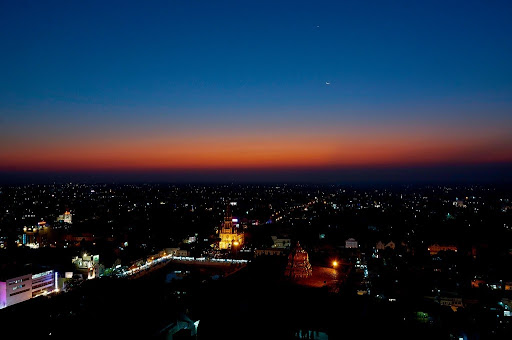
We experience day and night because of the Earth’s rotation. We know that the Sun continues to shine on the other side of the planet even if we do not see it at night. In the same way, we know that it is just a bit below the horizon during twilight.
True darkness means the absence of light. During this time, we do not receive any light from the Sun anymore. Instead, we use artificial lights to let us see our surroundings. The moon and the stars replace the Sun and dominate the night sky. This is the perfect time to go outside for stargazing, weather permitting.
In a more technical sense, we experience true darkness when the Sun is below the horizon by more than 18°. But what does it mean? It simply refers to the time when the three twilight phases have passed.
Twilight
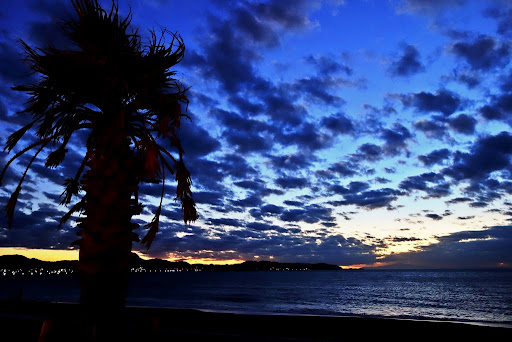
We witness two twilight periods each day: before sunrise and after sunset. We call the morning twilight “dawn,” before the Sun peeks above the horizon. At the end of the day, when it sets, we call it “dusk.”
Since the Sun is below the horizon, we do not receive sunlight directly during twilight. Instead, it hits the atmosphere where diffusion of light occurs. This scattering of light results in beautiful colors and illuminates the lower atmosphere. The morning twilight lets us prepare for the day ahead. In the evening, it gives us time to prepare for a good view of the night sky.
The Earth bathes in colors during twilight which inspires a lot of photographers. It is a great time to set up your telescopes and wait for the first stars to come out.
Different Stages of Twilight
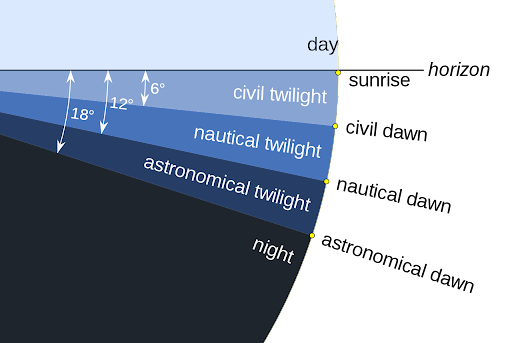
We experience different twilight states in the evening before it completely gets dark. These are civil twilight, nautical twilight, and astronomical twilight. These three stages are based on how far the Sun is below the horizon. Each of them offers different views of the sky which everyone can enjoy.
Civil Twilight

Civil twilight is often called the “golden hour.” During this time, our sky turns a soft reddish color. It starts at sunset time and ends when the center of the Sun dips 6° beneath the horizon.
During this time, much of the atmosphere still receives light from the Sun. It illuminates our sky and provides natural light. We can still see the things around us without any need for artificial lights. However, for safety purposes, streetlights start to light up around this time. Most drivers turn on their headlights too.
We can easily spot the brightest celestial objects during this period, like the planets Mercury and Venus.
With an apparent magnitude of −4.8, Venus is the second-brightest object in the night sky. It is easily visible during civil twilight at the start and the end of the day. This is why it is called both the “morning star” and the “evening star.”
Nautical Twilight
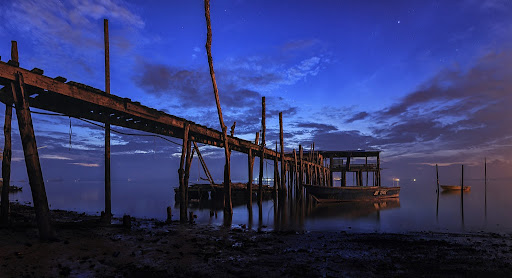
Nautical twilight follows civil twilight. In this period of time, the center of the Sun lies between 6° and 12° below the horizon. The atmosphere gets less sunlight this time, and the Earth starts to get darker than civil twilight.
The sky gets a dark blue shade and more stars become visible. It was named so because the horizon is still visible, which helped sailors with navigation. Because it is already darker, identifying the colors around becomes challenging.
Astronomical Twilight

Astronomical twilight is the last stage of twilight, just before nighttime. This time, the Sun is deeper below the horizon, between 12° and 18°. Our atmosphere gets the least illumination from the Sun in this stage.
It is not yet officially nighttime but we can already see most of the night sky objects. The sky only has the slightest glow so walking around will be difficult without any artificial light. During this time, lights are already turned on in buildings and houses.
It is a good time to start astrophotography. Fainter stars become visible to the naked eye. In a cloudless sky, the bright band of the Milky Way can be easily seen. In places near the poles, the Aurora starts to become faintly visible.
When the Sun reaches 18° and below, it is officially nighttime. Nocturnal animals like bats and foxes start to come out. For astronomers and sky enthusiasts, it marks the ideal time for observing the night sky. The celestial objects become more prominent deeper into the night.
The cycle repeats again in the morning—but in reverse. From complete darkness, astronomical twilight follows, then nautical twilight, followed by civil twilight, until the Sun finally rises.
Factors To Consider
The time it takes to get dark after sunset depends on two factors: your location and the time of year.
Location
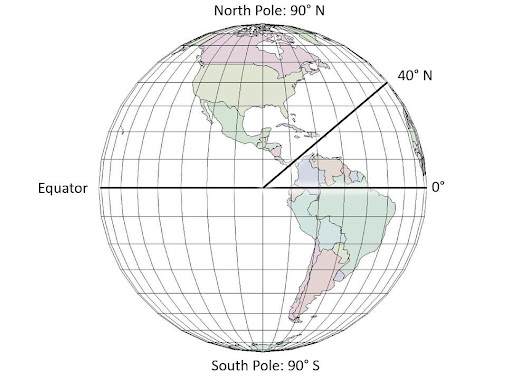
When talking about location, we can use the imaginary lines on Earth as our guides. Separating the northern and southern hemispheres is the equator. It corresponds to 0º latitude.
Latitude increases the farther you are from the equator. The farthest points are the north and south poles at 90º latitude. These lines are important because it tells us how much sunlight we receive based on where we are.
In places near the equator, sunlight is constant all year round. Because of that, the day and night length is almost always equal (12 hours). Further north or south, the day and night can be longer or shorter according to the season.
As a result of these differences, the amount of time it takes to get dark after sunset also varies. Night falls faster at the equator compared to other places. Because the Earth is a sphere, sunlight strikes at an angle at higher latitudes. As a result, twilight lasts longer.
Seasons and Time of Year
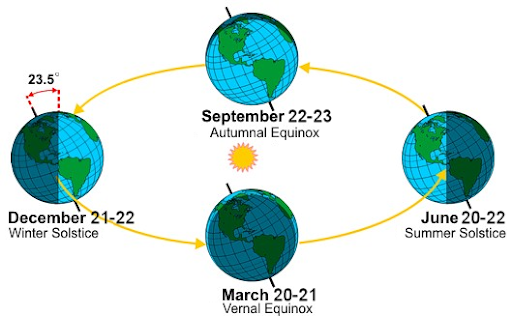
The Earth’s axis is tilted by 23.5°. This tilt is the reason why we have different seasons.
Places near the equator do not experience four seasons. Since sunlight is more constant, there are only little seasonal changes. Usually, there are only rainy and dry seasons in these places.
Seasonal variations increase as you move away from the equator. The northern and southern hemispheres receive more or less sunlight because of the Earth’s tilt. These differences are marked by the equinoxes and solstices that we experience throughout the year. Let’s see how they influence how long it gets dark after sunset.
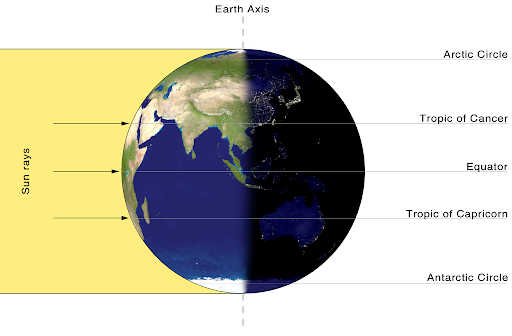
We experience the equinox twice a year. It is the time when the day and night are of equal length. It also marks the beginning of spring and autumn depending on your location. The northern and southern hemispheres experience opposite seasons.
The March equinox means spring in the northern hemisphere but it signals autumn in the southern hemisphere. Same with the equinox in September, wherein it is autumn in northern latitudes but spring in southern latitudes.
Northern Hemisphere | Southern Hemisphere |
||
|---|---|---|---|
| Vernal Equinox | Autumnal Equinox | Vernal Equinox | Autumnal Equinox |
| March 20-21 | September 22-23 | September 22-23 | March 20-21 |
Does this affect how long it takes after sunset to get dark? Yes, definitely!
In both the northern and southern hemispheres, it gets darker faster during the equinoxes. Sunrise is faster too. It rises due east and sets due west, hitting the horizon at the steepest possible angle. While it makes sunsets faster in other places, it will not have much effect on the equatorial regions. The time it takes to get dark there is just about the same all year round.
Solstice
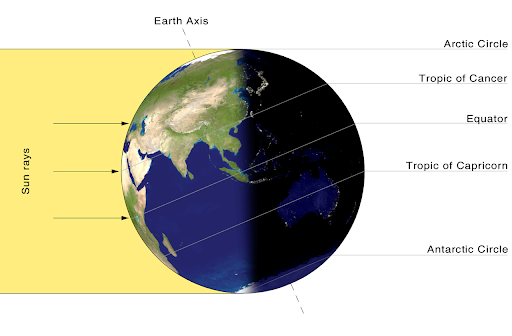
Illumination of Earth by the Sun on the day of the summer solstice in the northern hemisphere.
Solstices are the time of the year when the length of night and day are not equal. We experience two solstices in a year. During this phase, the Earth’s axis is either pointing towards or away from the Sun.
The June solstice marks the beginning of summer in the north because the pole is tilted toward the Sun. The south pole is at its maximum distance so it is winter there. In December, we experience winter because the north pole is pointing away from the Sun. The southern part, however, tilts towards the Sun at this time. This is why many people in Australia celebrate Christmas on the beach.
Northern Hemisphere | Southern Hemisphere |
||
|---|---|---|---|
| Summer Solstice | Winter Solstice | Summer Solstice | Winter Solstice |
| June 20-21 | December 21-22 | December 21-22 | June 20-21 |
We experience the longest day of the year during the summer solstice. Conversely, the shortest days occur during the winter solstice. The Sun sets farthest from due west at this time. It hits the horizon at a shallower angle so twilight lasts longer. Also, the farther you are from the equator, the longer it gets dark after sunset.
Midnight Sun and Polar Nights
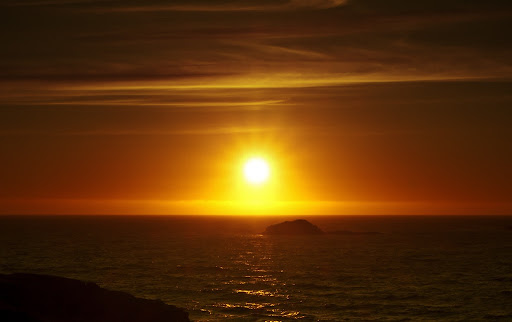
Some areas near the poles do not experience night or day during summer and winter.
The midnight sun occurs when places near the Arctic Circle and Antarctic Circle do not experience darkness at all. Some of the countries that experience this in the northern hemisphere are Norway, Iceland, and Alaska. The opposite of the midnight sun is the polar night—when nighttime lasts for more than a day.
Interestingly, the countries where the midnight sun and polar nights occur are also the best places to see the Aurora Borealis.
How Long It Takes To Get Dark After Sunset
Nighttime falls quicker in some areas around the globe than in others. In places near the equator, it takes around 20 to 30 minutes to get dark totally. However, in places up north or farther south, this may take around 60 to 140 minutes.
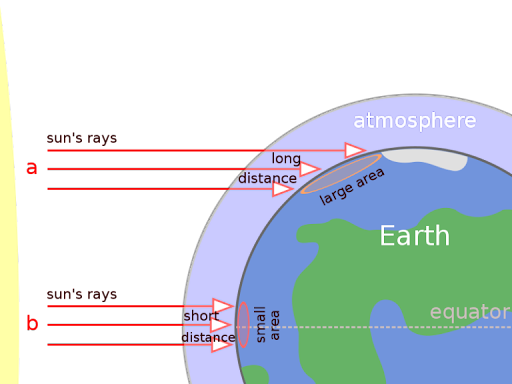
To understand why this is so, we must remember that different locations are affected by sunlight in different ways. Light hits the Earth’s surface more directly at the equator and when it sets, it is more perpendicular to the horizon.
In locations with higher latitudes, however, the sunlight takes a more oblique path. It passes through more air which causes more scattering of light in the atmosphere. As a result, twilight lasts longer and it takes more time to get dark after sunset. The time of year is also something to consider along with this.
Importance for Astronomy and Astrophotography
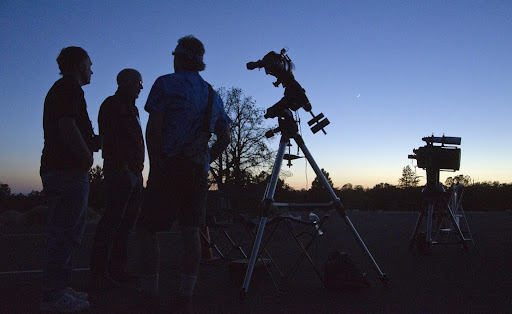
A dark, cloudless sky is every skygazer’s best friend. This is why facilities like the La Silla Observatory and the Mauna Kea Observatory are built on top of high mountains, away from light pollution.
Aside from location, knowing when it would get dark is just as important for night sky observations. It lets you prepare your equipment ahead. Additionally, you will have an idea of when most celestial objects can be seen.
Sky observers from the equator need not worry about the seasons since the day-night cycle is uniform all throughout. If you live away from the equator, the equinoxes, solstices, and seasons are something to be considered. During winter months, for example, it takes longer to get dark. Aside from that, you should also prepare extra clothes for the long cold nights. Also equipment such as telescopes for viewing planets and astrophotography cameras take time to settle at outdoor temperatures. You need to let them adjust to prevent things like condensation ruining your shot. While the nights might be colder, this is good for creating nice clear air, great for capturing sharp images.
Golden Hour, Blue Hour, and Twilight
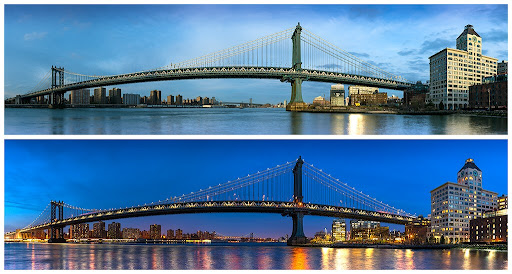
- Golden hour (from 6° above the horizon to 4° below the horizon)
- Blue hour (from 4° to 6° below the horizon)
While waiting for it to get dark, astrophotographers can also enjoy the colorful twilights. The scattering of light in the atmosphere bathes the Earth in stunning colors and silhouettes. Two of the most awaited periods are the so-called “magic hours.”
The golden hour occurs just before sunset time when the Sun is 6º above the horizon. It ends when it dips 4º below the horizon. It is marked by the warm light that spreads all around. The golden hour is followed by the shorter blue hour when the Sun has just reached the end of civil twilight.
In civil twilight, Mercury and Venus are already visible. Along with these bright objects, normal photographs are still possible since there is still much light around. The glow of this transitional period is ideal for landscape and portrait photography. Moon photography is also great around this time.
More stars start to come out during nautical twilight. There is still some light on the horizon which makes other objects invisible, especially in urban areas.
In the next phase, the astronomical twilight, the moon becomes more prominent. Some star clusters, galaxies, and nebulae can be spotted with a telescope. These objects will become more visible when true night comes—when the Sun is more than 18° below the horizon. For an even darker sky, we should also consider the phases of the Moon.
Understanding when it will get dark is as important as learning about celestial objects. Some websites can help with determining the exact time when it will get dark. The twilight times of each phase are also included.
Interesting Facts About Sunsets
- Sunsets appear in many colors because of Rayleigh scattering. It is the same process that makes our sky blue.
- Sunlight travels through more of the atmosphere when the Sun is near the horizon. More air means more scattering of light, especially blue and violet since they have shorter waves. What remains in our line of sight instead are the less scattered colors—those with longer wavelengths. Sunsets are sometimes yellow, orange, and most commonly red.
- Pink and sunsets are caused by aerosols and smog. The addition of air pollutants, in addition to gas molecules, results in more scattering. It softens the more common red sunset, resulting in pink.
- We can also sometimes have violet/purple sunsets. Seeing these unusual colors though means that a volcano has erupted. These volcanic aerosols create more scattering so a different hue is visible.
- We do not have green sunsets, but the closest we get to one is a “green flash.” In this rare phenomenon, a green color is briefly visible above the setting Sun.
- It is possible to see double sunsets when we are in high places like mountains. It sets for the first time and reappears before totally setting. This is more a matter of viewing point though and does not mean that the Sun really dips twice.
- It is said that sunsets are better in the winter. The air is colder and dryer this time, which means fewer aerosols are in the air. Without these additional light-scattering particles, we see the sunset colors in more intensity.Some places do not experience actual nights
- during the summer months. The midnight sun occurs because the Sun remains above the horizon, so there is no total darkness.
- During the winter months, some places experience polar nights. It is when the center of the Sun never rises above the horizon. Thus, nighttime lasts for more than a day.
- Because of its different composition, the sky on Mars is very different from ours. It has a reddish sky when the Sun is up in the sky. During sunset, however, it has a bluish glow.
Sources:
(https://earthsky.org/astronomy-essentials/years-fastest-sunsets-around-equinoxes/)
https://www.chicagotribune.com/news/ct-xpm-2011-07-08-ct-wea-0708-asktom-20110708-story.html
https://www.britannica.com/story/whats-the-difference-between-a-solstice-and-an-equinox
(https://www.astronomyforbeginners.com/what-time-does-it-get-dark-after-sunset/)
(https://www.optimistdaily.com/2019/11/why-winter-sunsets-are-best-according-to-a-meteorologist/)
(https://eartheclipse.com/geography/what-causes-pink-sunsets.html)
Image Sources:
Twilight From Rockfort: https://search.creativecommons.org/photos/0aedc8f9-a360-4525-adfb-695b654b4188
Welcome to the twilight: https://www.flickr.com/photos/125784328@N02/15098165833
Types of twilights: https://upload.wikimedia.org/wikipedia/commons/thumb/b/b4/Twilight-dawn_subcategories.svg/1280px-Twilight-dawn_subcategories.svg.png
Civil twilight: https://www.flickr.com/photos/8921569@N07/46873324275
Nautical twilight: https://www.flickr.com/photos/69679067@N05/14945202695
Astronomical twilight: https://www.flickr.com/photos/73449134@N04/8378865950
Location: https://gsp.humboldt.edu/olm/Lessons/GIS/Images/latitudes2.JPG
Solstices and equinoxes: https://www.weather.gov/images/cle/Education/EarthOrbit.png
Equinox: https://upload.wikimedia.org/wikipedia/commons/thumb/8/84/Earth-lighting-equinox_EN.png/1024px-Earth-lighting-equinox_EN.png
Solstice: https://upload.wikimedia.org/wikipedia/commons/thumb/c/c8/Earth-lighting-summer-solstice_EN.png/1280px-Earth-lighting-summer-solstice_EN.png
Midnight sun: https://www.flickr.com/photos/48470112@N05/8916602540
Solar radiation on Earth: https://s3-us-west-2.amazonaws.com/courses-images/wp-content/uploads/sites/250/2017/04/25225142/800px-Oblique_rays_02_Pengo-768×576.png
Grand Canyon National Park star party: https://www.flickr.com/photos/50693818@N08/9345867833
Golden hour and blue hour: https://www.flickr.com/photos/131474603@N03/26266992694